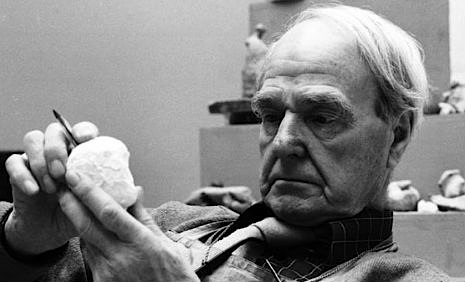
So, how much is a Henry Moore sculpture really worth?
Well, if we were to judge this by the money some criminals have made from the theft of a few of Moore’s best known works, then we may be surprised to find that a giant bronze statue can be bought for as little as a few thousand dollars.
This was how much thieves made on one of Moore’s most revered sculptures “Reclining Figure” (1969-70) after it was stolen from the 72-acre Henry Moore Foundation estate in Much Hadham, England in 2005. Weighing over 3-tons and standing six feet in height and ten feet in length, this elegant bronze statue was valued at $5 million. The theft baffled police, who originally suspected the statue had been stolen to order, but on investigation discovered it had in fact been taken by “a group of travellers from Essex” who sold the giant bronze to a scrap metal dealer for $2,500. A bargain considering the value of the art work and the Henry Moore Foundation’s offer of $18,000 reward for the statue’s safe return.
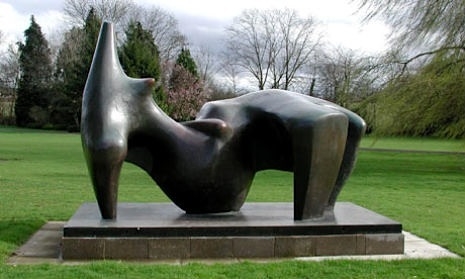
‘Reclining Figure’ (1969-70).
Over the past decade, Moore’s beautiful and voluptuous sculptures have been the unfortunate focus of thieves across England and Scotland who hope to make quick buck selling these giant art works for scrap metal. In 2012, two men were jailed after stealing Moore’s piece “Sundial” once again from the Much Hadham estate. The dastardly duo sold the sculpture for a mere $75. While “Standing Figure” (1950) was stolen from the Glenkiln Sculpture Park, Dumfries and Galloway, Scotland, and is also believed to have been melted down and sold for scrap.
So, it’s true—crime doesn’t (always) pay and thieves, it would seem, have no idea of the value of art.
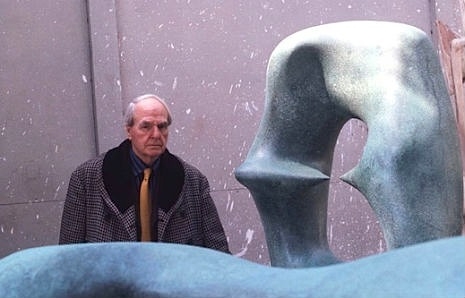
Moore by Allan Warren.
Henry Moore was one of the twentieth century’s greatest sculptors. Born in July 30th, 1898, the seventh of eight children, Moore was encouraged by his father and mother to be self-reliant and to value hard work:
She [his mother] had tremendous physical stamina. She used to work from morning till night until she was over seventy. To be a sculptor, you have to have that sort of energy and that sort of stamina. Sculpture is of all the fine arts the one which you have to have an absolute physical fitness. You can’t—in the early stages at least—be tired or ill if you want to be a sculptor.
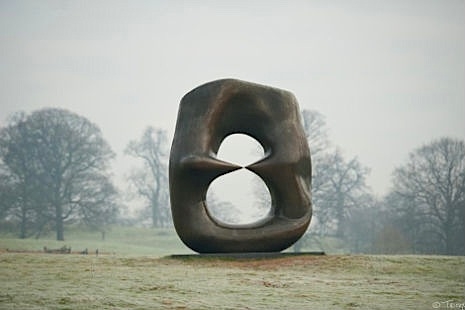
Moore later described his childhood as “a very good time” filled with “the warmth and friendship of a large family.” This was when he made his first tentative steps towards a career as a sculptor, playing games with friends at a local quarry where they made small wooden carvings and built clay ovens (“little square boxes with chimneys and a hole at the side, and we’d fill these with rotten wood and light it and blow on the fire to warm our hands in winter”) .
Moore was encouraged in his artistic ambitions by his father, on the condition that he had an alternative career to fall back on. In 1915, Moore became a teacher at his elementary school until he was called up to fight in the First World War, which he later described with characteristic understatement:
For me, the war passed in a romantic haze of hoping to be a hero. Sometimes in France there were three or four days of great danger when you thought there wasn’t a chance of getting through, and then all one felt was sadness at having taken so much trouble to no purpose; but on the whole I enjoyed the Army…After I was gassed at Cambrai I was in hospital for three months and it still affects my voice at times, but as they made me a PT instructor afterwards I suppose I must have got pretty fit again.
After the war, Moore attended the Leeds School of Art in 1919, where he considered himself “very lucky not to have gone to art school until I knew better than to believe what the teachers said.” At college he was influenced by such artists as Henri Gaudier-Brzeska, Picasso, Epstein, and Eric Gill, and in his sculpture he intended to get rid of the:
..complete domination of later, decadent Greek art as the only standard of excellence.
Moore won a Royal Exhibition Scholarship in sculpture to attend the Royal College of Art, London, in September 1921. Here he fell under the influence of RCA Principal, Sir William Rothenstein, who encouraged creativity, originality and the belief that his students should not be held back by England’s class structures as “a man was what he made himself.” Rothenstein also introduced his students to established artists, writers and politicians. This was how Moore found himself one evening talking to the Prime Minister Ramsay Macdonald:
Rothenstein gave the sense that there need be no barrier and no limit to what one can embark upon, and that is very important to a young student. Here was I, a student straight from Yorkshire, and it seemed perfectly natural for me to be standing in front of the fire and talking to the Prime Minister.
This new environment offered Moore the opportunity to try out different ideas in his work:
When I first came to London I was aware of Brancusi, Gaudier-Brzeska, Modigliani and the early Epstein, and of all that that direction in sculpture stood for. I couldn’t help—nobody can, after all—being a part of my own time. But then I began to find my own direction, and one thing that helped, I think, was the fact that Mexican sculpture had more excitement for me than negro sculpture. As most of the other sculptors had been moved by negro sculpture this gave me a feeling that I was striking out on my own.
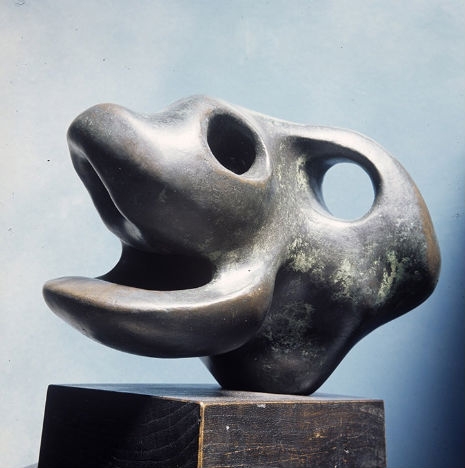
Animal Head.
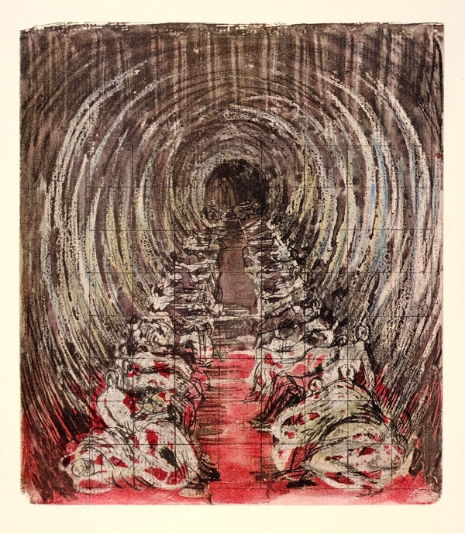
Underground sketch.
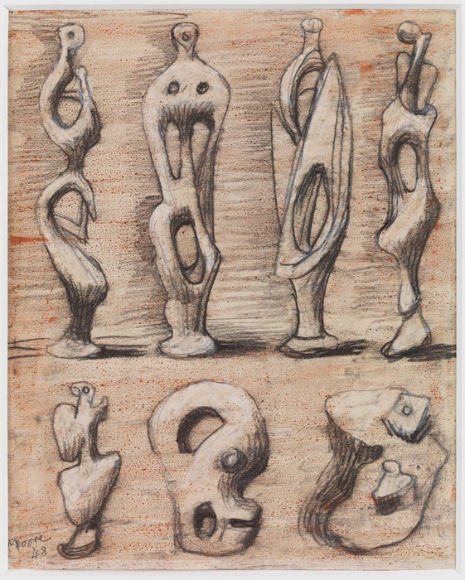
Sketch.
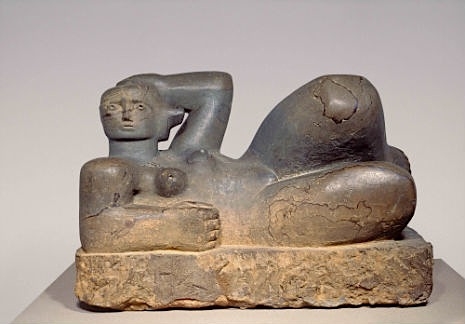
‘Reclining Figure’ (1929)

‘Crowd Looking at Tied-up Object’.
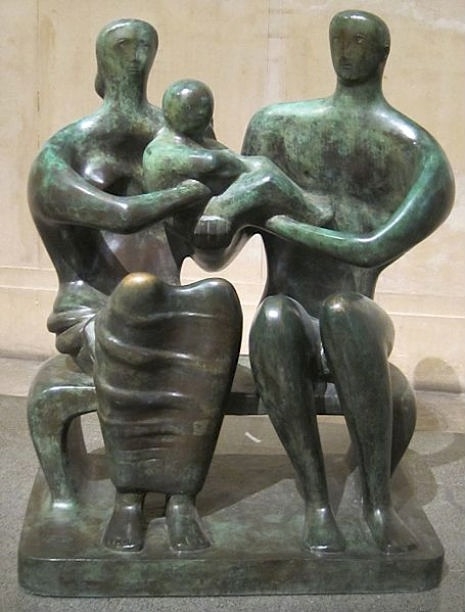
‘Family Group’.
The documentary The Art of Henry Moore (2007) examines the life and work of “arguably the greatest sculptor of the twentieth century,” featuring archive from the Henry Moore Foundation together with newly filmed footage of his sculptures across Britain. The soundtrack has been created out of the artist’s own words as found in letters, interviews and articles.